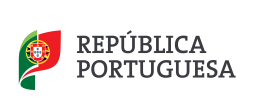History
Identify the main moments in the historical evolution of glass and its production;
Historically identify the production of the Royal Wine Factory of Marinha Grande and the Vista Alegre Factory.
Clearly identify the terminology of the crafts, as well as the different marks and symbolic representations that exist in Portuguese jewellery;
Identify the typological, formal and decorative characteristics of Portuguese silverware, from the Romanesque to Art Deco;
Identify the types, ornaments and functions of jewellery from protohistoric times to the 20th century in Portugal.
Identify manifestations of non-noble metals in Portuguese art;
Materials and Technologies
Provide knowledge related to the physical-chemical properties of inorganic materials (glass/metals) as supports for cultural goods.
To provide knowledge on the behaviour of inorganic materials (glass/metals) in the face of deterioration agents.
Contextualise manufacturing and artistic production technologies.
On completion of the course, students will be able to:
Identify the historical evolution of the use of glass and metals as supports for cultural goods;
Identify the materials that make up the supports of cultural goods, in order to understand their behaviour and the anomalies they may present, with a view to making assertive diagnoses that enable proposals to be drawn up for their conservation and/or restoration.





